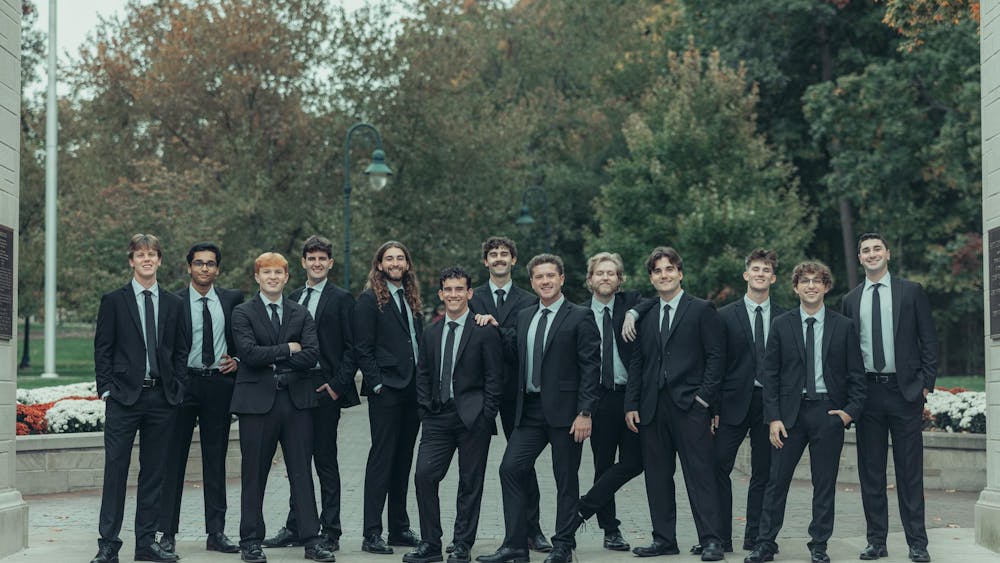At long last, the Serious Habitual Offender Comprehensive Action Program is underway in Monroe County. Local government officials announced last Friday that the program recently received a $56,969 start-up grant through the Indiana Criminal Justice Institute. \nThe institute made the award to reduce juvenile delinquency and increase the accountability of juvenile offenders, a spokesman said. It is the second such grant awarded to the program. \nIn April of 2000, the program received an award of $74,985 from the state. These funds were the catalyst to completion of the program's six year starting process here in Bloomington. \nThe program is a federal initiative designed by the Office of Justice and Delinquency Prevention. Officials say it has shown promising results all over the country -- including Illinois, Wisconsin and Florida. \nHabitual offender programs in Goshen and Kokomo have become well-established. The program is primarily intended to identify serious juvenile habitual offenders in the community and ensure supervision. The program also plans to pursue legislation that would establish a coordinated juvenile justice system focused on crime committed by habitual offenders. \nMonroe County Prosecutor Carl Salzmann initiated the local program in 1995. Bloomington at the time was facing a drastic rise in juvenile crime associated with gang activity. \n"We were seeing a lot of juvenile drug use and gang activity that we have never seen before prior to 1992-93," Salzmann said. "The signs were evident. Graffiti was everywhere. Colors were everywhere. You could go down on Kirkwood, if you knew what to look for, you could see it was there."\nOne of the statistics that Chief Probation Officer Linda Brady found startling was the 19 burglary juvenile offenses committed in 1995. And as recently as 1999, Brady said, there were 13 adult convictions of juvenile offenders.\nThese troubling statistics are what Salzmann said encouraged him to run for County Prosecutor. \n"It felt like we were missing the boat," Salzmann said. "So it seemed to me like it (the program) was exactly what we needed. Something to address the problem, not stick our heads in the sand anymore, and really go right after it". \nThe most essential aspect of establishing such a program was community collaboration, Salzmann said. To make the program work, several local agencies have had to come together.\nThe services already available to service workers are relatively slow-paced, Salzmann said. The individual caseworker does not have the resources readily available to know the complete picture of a juvenile habitual offender's situation. \nSo, Salzmann said, the child continues to commit offenses without proper consequences or without receiving the appropriate services. Under the program, a juvenile case worker can access a secure database with all the information available on that youth offender.\nAnd the program identifies serious habitual juvenile offenders through a point system based on crimes committed.\n"We developed our own point system," said Christina McAffee, juvenile division supervisor for Community Corrections. "For particular adjudications, felonies or misdemeanors, kids are given a certain number of points." \nMcAffee said 10 points or more qualifies an offender for admittance into the program.\nThe court system identifies a juvenile offender as a youth under the age of 18. But the juvenile court system typically deals with offenders in junior high. And the majority of the serious offenders in the program will be in the junior high to high school age group, McAffee said.\nThrough preliminary research, the program has identified approximately 40 juvenile offenders in Monroe County who would qualify for the program. Of the 40, McAffee said, about 15 would qualify as serious habitual offenders. \nAnother 10 in this initial group are considered near-serious offenders because their point status is at 5 or above, McAffee said. The remaining 10 are high-risk juveniles because "they have been described as difficult for officers to manage," according to the SHOCAP preliminary report. \n"A (serious habitual offender) isn't a label that we just put on a kid, it is something a child would unfortunately earn through their negative behavior," Brady said. "They have earned their way to this status so they are on a heightened level of awareness. \n"So we are really going to hold their feet to the fire to keep them on the straight and narrow. We find that is the best way to deal with it, through immediate response." \nBrady said that supervision includes probation, electronic monitoring and a curfew. Even missing a day of school for an enrolled youth would result in an immediate, stern response.\n"A lot of research will tell you that 8 percent of the kids commit 90 percent of the offenses," McAffee said. "It's that 8 percent that we really want to target." \nMcAffee and others said they hope to prevent the juveniles in the program from becoming career criminals. They also spoke of preserving the safety of the greater community.\nAgencies involved\nSHOCAP brings together a coalition of youth and law-enforcement agencies that include:\n• Monroe County Probation Department.\n• Monroe County Community School Corp.\n• Bloomington Police Department.\n• Greater Bloomington Chamber of Commerce.\n• Richland-Bean Blossom School Corp.\n• Monroe County Wraparound Services.\n• Ellettsville Police Department.\n• Center for Behavioral Health.\n• Indiana University Police Department.\n• Monroe County Community Corrections.\n• Monroe County Prosecutor's Office.\n• Indiana State Police.\n• Monroe County Sheriff's Department.\n• Monroe County Office of Family and Children.\n• Monroe Circuit Court.\n• Youth Services Bureau.
Prosecutor's office finally launches program
Get stories like this in your inbox
Subscribe





